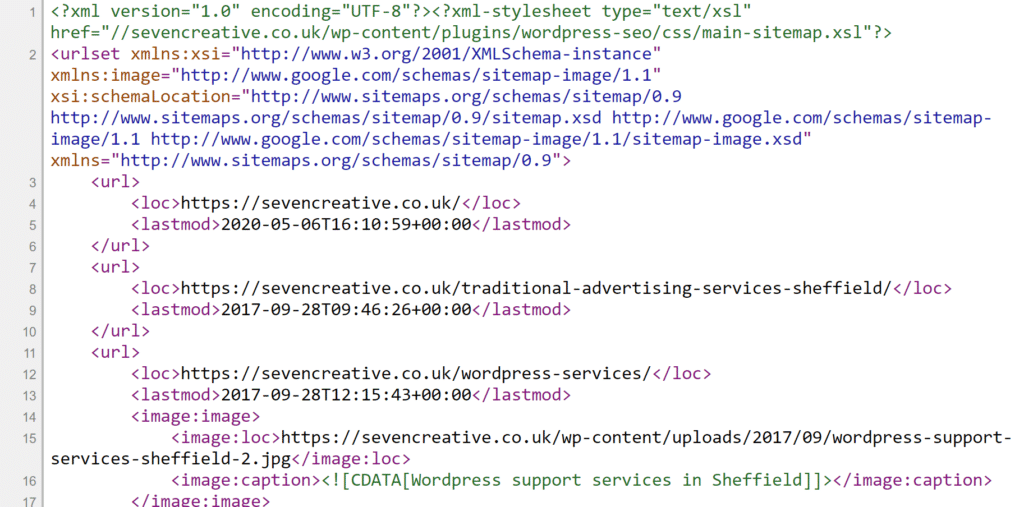If you’ve ever looked into search engine optimisation (aka SEO) in any detail you’ll probably have come across what’s known as a ‘sitemap’. And if you are new to SEO, you’ll also probably be asking yourself ‘what is a sitemap’? A sitemap, in its simplest form, is a file (or files) that provide information about files and pages on your website. It normally site with your other files but it used by search engines to more easily & quickly discover the content on your site. It’s normally simply called something along the lines of ‘sitemap’ and will also normally have an ‘.XML’ extension – e.g. ‘sitemap.xml’. Sitemaps are read by search engines and this information is used to get a clearer picture of things like which pages & files there are on a website; and what type of pages & files theses are (for example, contact pages, downloads, or blog posts)

What is a sitemap and why does my website need one?
Your main website navigation is how your website visitors find their way around your website, however, these links may not always provide the whole picture to visitors. For example, there may be pages that aren’t particularly relevant to a visitor so they may not be shown these. However, the website owner may actually want all the website pages to appear in Google (as this is an important source of website traffic for many sites) so a sitemap is a fast way of letting the search engine know things such as the following:
- Which pages & files exist on a website
- When each page was last updated
- How often the page is updated
- Alternate language versions of the individual page
- For video, how long the video is, what is the appropriate age rating, what is the video category
- For images, what is the image of, what type of image it is, and what is the image licence
Having a sitemaps is particularly important for:
- Sites that contain pages or areas that are not available through the site navigation
- Sites that use technologies such as Ajax, Silverlight, or Flash which can’t be ready easily by search engines
- Sites that are very large meaning web crawlers may miss some of the new or recently updated content
- Sites that have a lot of pages that are isolated or not well linked together
- Sites that have few external links for example, new websites)
What does a sitemap look like?
Sitemaps for newer websites are often dynamically generated so change when new content is added. They use the XML mark-up which is like HTML but don’t have any styling information attached. Looking at the raw file may be confusing, but an XML viewer will show you the file in a more user-friendly format. Some internet browsers have an in-built XML viewer. Here is are the sitemaps for this website:
- The main sitemap which provides link to the category sitemap – https://sevencreative.co.uk/sitemap_index.xml
- The sitemap showing all the site’s posts – https://sevencreative.co.uk/post-sitemap.xml
- The sitemap showing all the site’s post categories – https://sevencreative.co.uk/category-sitemap.xml
- The sitemap for all the pages on this website – https://sevencreative.co.uk/page-sitemap.xml
Here is another example of a simpler sitemap:
This particular site is quite big which hundreds of blog posts, articles, images and pages so the sitemap structure is quite big
Website sitemaps are a very established part of a website structure (having been introduced in 2005) and continue to be important for search engine optimisation purposes. If you want your site to index properly within search engines, then making sure your sitemap is up-to-date and working correctly a very important part of your activity
Is my website’s sitemap up-to-date?
There are several ways to find out if your sitemap is up-to-date – some fast and some a bit more fiddly and slow. Some sites may not even have a sitemap which may be a problem from an SEO perspective. The best way to find out for certain is by asking an SEO expert to have a look.
If you’re looking for an SEO expert or an SEO company in Sheffield for help with your website and its search engine optimisation (SEO), please give us a call on 0114 383 0711 or visit our contact section